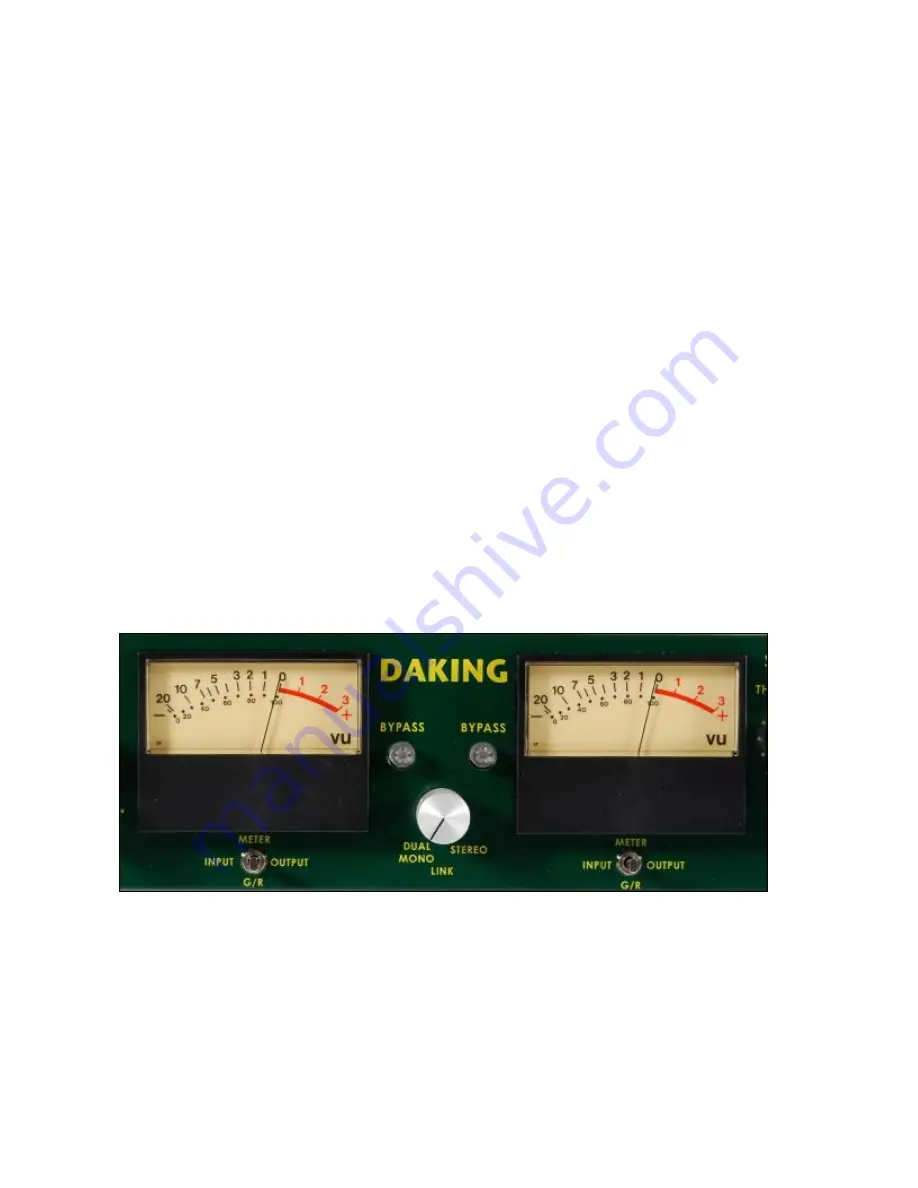
12
1.4.6 HPF (High Pass Filter: from Off to 200 Hz)
The High Pass Filter only affects the sidechain path and not the audio
path. This means that it cuts low frequencies below the Hertz setting on
the HPF by 12 dB/Octave in the audio signal that goes through the
detection path. See Figure 1. Removing the low frequencies from the
detection circuit causes the compressor to not compress when low
frequency sounds dominant the audio signal. This allows the compressor
to avoid attenuating low sounds like kick drum and bass and still control
the dynamics of the midrange and high frequencies.
This feature is especially useful when you are using the FET III for stereo
buss compression. As you turn up the HPF knob, you will notice that it
has the effect of boosting the bass frequencies, while the mids and upper
frequencies get more controlled.
1.4.7 Make-up Gain Knob (from +0dB to +11dB)
The Make-up Gain control restores the overall level and compensates for
the attenuation of the audio signal through the process of compression.
1.4.8 VU Meter
Your compressor is equipped with a wonderful device, called a VU meter.
A VU (Volume Unit) meter measures loudness more like the way people
hear loudness: as an average of the levels over time (in this case, the last
300 ms.) Typically 0 on a VU is equivalent to -18 dBu full scale, or 18 dB
lower than digital audio systems‟ 0 dB. It is also +4dBu, the standard
operating level of professional audio equipment. Most digital recorders
and DAWs use PPM or Peak Program Meters to show the loudest part of a























